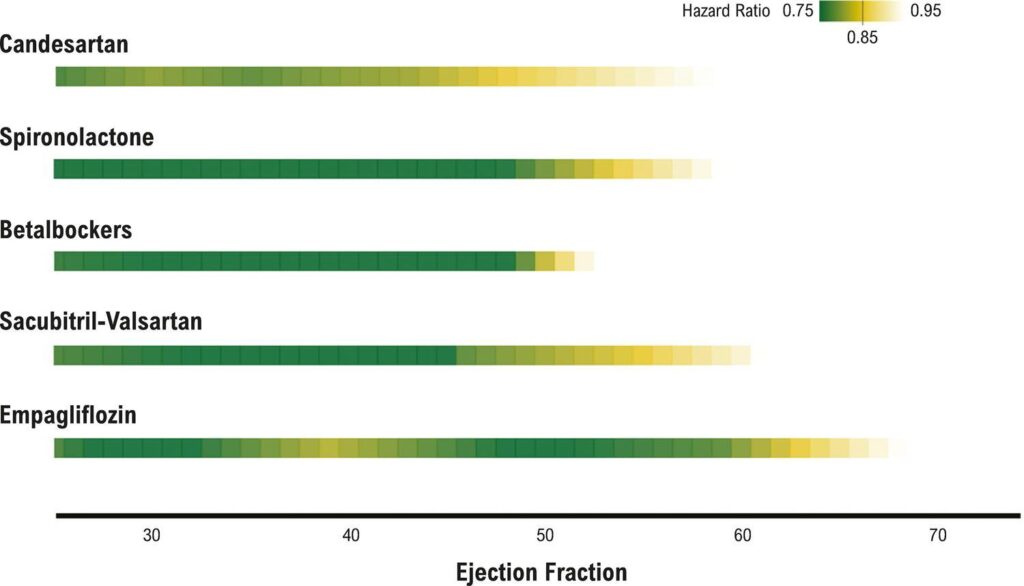ABC Heart Fail Cardiomyop 2022; 2(1): 67-71
SGLT2 Inhibitors and Sacubitril-Valsartan: How Trial Results will Revolutionize the Treatment of Heart Failure with Mildly Reduced Ejection Fraction
Left ventricular ejection fraction (EF) is a key parameter in the management of heart failure (HF) and a crucial biomarker for prognostic evaluation and therapeutic decision. Patients with HF are classified into different categories according to EF. Although the concept of “normal” EF was introduced four decades ago, the cutoff values for normal and abnormal EF have considerably varied over time. In 2016, the European Society of Cardiology HF guidelines defined HF with reduced EF (HFrEF) as patients with EF below 40%, while HF with preserved EF (HFpEF) was the category for patients with EF equal to 50% or above. To fill in the gap between the two categories, the term HF with mid-range EF was introduced. More recently, the guidelines considered more appropriate to rename this category to HF with mildly reduced EF (HFmrEF). , Why has the EF-based classification changed in recent years and how may this affect HF treatment?
In the 1980s, the first HF trials used in their design EF cutoffs to select patients with worse prognosis as an enrichment strategy, ie, they included patients based on a biomarker that improves design efficiency. Because patients with lower EF have worse prognosis and, therefore, higher rates of events, a relatively smaller sample size would be required to detect an effect. These trials used cutoff values for EF that ranged from < 45% to < 25% ( ) and were highly successful in finding effective therapies. In general, trials using a cutoff EF of < 40% consistently found drugs and devices for the treatment of HF that improved outcomes.
[…]
690


